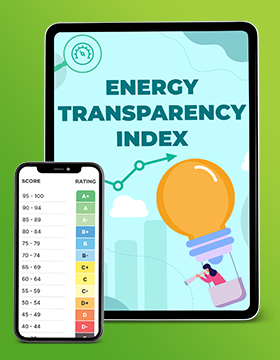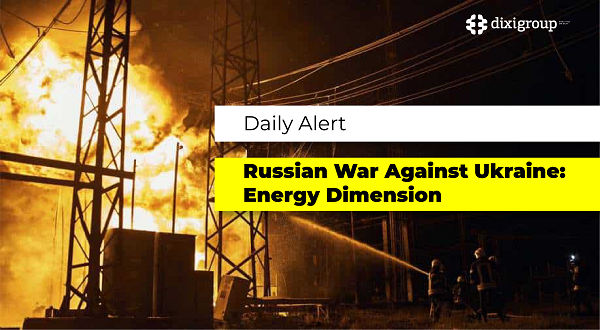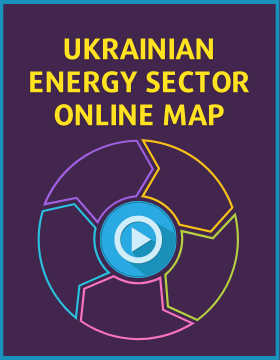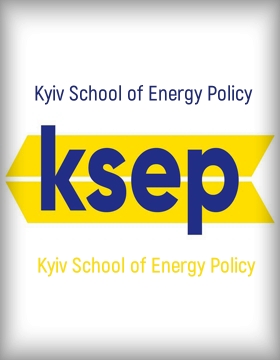Marshall Plan for Energy: How International Donors Support Reform
USAID, EBRD, World Bank — who helps the Ukrainian energy sector and how?

After three years of full-scale war, Ukraine’s energy sector has become one of the key fronts in the confrontation with Russia. Russian shelling systematically targets critical infrastructure, which strikes not only at the energy system, but also at the country’s economy, social stability, and defense capabilities. According to official data from the Ministry of Energy of Ukraine, since February 2022, more than 63,000 energy infrastructure facilities have been damaged, and in 2024 alone, Ukraine lost about 10 GW of generating capacity due to massive attacks and daily pinpoint strikes.
As a result of these attacks, 160 energy workers died and more than 300 were injured. Such losses are unprecedented for a peaceful state and indicate a targeted energy war.
Ukrainian Energy found out how Ukraine is coping with such challenges.
Without USAID
Despite the difficult conditions, the Ukrainian power system has demonstrated remarkable resilience. During the 2024/2025 heating season, energy workers were able to restore about 60% of damaged generating facilities. All nine NPP units under Ukrainian control operated during the peak winter months. This was made possible thanks to the consolidated support of international partners, who effectively deployed a Marshall Plan for Ukraine in the energy sector — a large-scale aid designed to ensure the restoration and reform of the industry in wartime conditions.
However, not all international support is sustainable. As reported by NBC News, in January the US State Department decided to terminate the USAID assistance program for the restoration of Ukraine's energy system.
This program provided for hundreds of millions of dollars of investment, and its termination has already provoked criticism among the agency's own representatives. One USAID employee said that such a move would undermine confidence in US efforts and send a signal to Russia that Washington is losing interest in the Ukrainian issue. In practice, this means a sharp reduction in USAID staff in Ukraine - from 64 to 8 people, which will significantly limit the possibilities of implementing projects.
At the same time, against the background of the partial curtailment of American initiatives, European donors have become more active. The European Bank for Reconstruction and Development (EBRD) plays the most prominent role. According to the bank’s vice president Matteo Patrone, it is planned to allocate about one billion euros for 2025 to support the Ukrainian energy system, Reuters reports.
Since the beginning of the war, the EBRD has already provided more than 6.4 billion euros for Ukraine’s needs, of which about 2 billion are directly aimed at energy security. By the end of this year, the total amount, according to the bank’s forecasts, may reach 3 billion euros, which makes the EBRD the largest institutional investor in the Ukrainian energy sector.
The EBRD’s support for the state energy sector is especially important. In cooperation with the Ministry of Finance of Ukraine, the EBRD is currently financing 9 energy projects out of 14 total, implemented in the public sector, the press service of the Ministry of Finance reported.
One of the key areas is ensuring the liquidity of Naftogaz and the stable passage of the heating season. In April 2025, a guarantee agreement was signed to provide the company with 270 million euros. Also, in 2022-2025, the bank allocated almost a billion euros for emergency purchases of gas for the needs of the population and industry. These steps allowed to maintain the operation of critical infrastructure and avoid a systemic energy crisis in the winter.
The European Investment Bank (EIB) will provide Ukraine with 300 million euros for the needs of restoring the energy sector and critical infrastructure. This was announced by Prime Minister Denys Shmyhal on Telegram after signing the relevant agreements in Brussels with EIB President Nadia Calvino, which took place in April.
As the head of government specified, 100 million euros of this amount will be allocated to the modernization of district heating systems, increasing energy efficiency and purchasing equipment for the production of electricity and heat. Another 100 million euros will be spent on the implementation of projects in the water supply and sewage sector. The last 100 million will be spent on the restoration of water and heat supply networks, as well as on the renovation of social infrastructure facilities, in particular in education, medicine and housing.
During the negotiations, the parties also discussed the prospect of launching new joint initiatives in the fields of transport, energy efficiency, social services and energy. Shmyhal emphasized that since the beginning of the full-scale Russian invasion, the EIB has already mobilized over 2 billion euros of emergency financing to support Ukraine.
Germany is a central donor
Another powerful partner of Ukraine in the energy sector is Germany. For the third year in a row, this country remains the largest donor to the Energy Support Fund of Ukraine, having financed it with more than 385 million euros - more than a third of all revenues, according to the Ministry of Energy.
Thanks to these funds, six gas turbine units with a total capacity of 156 MW were purchased, which were installed at the facilities of the GTS Operator of Ukraine. In addition, the funds were directed to the restoration of main and distribution power grids, the modernization of heating networks in frontline cities, the purchase of transformers and auxiliary equipment for Ukrhydroenergo. Germany also transferred more than 2,280 tons of humanitarian aid - this is approximately 10% of all volumes received by the energy sector of Ukraine from abroad.
In addition to the EBRD and Germany, other partners also play an important role. According to Reuters, in 2024-2025, the G7 countries allocated about $ 1 billion in aid, including $ 500 million from the United States, € 300 million from the EBRD, € 70 million in grants and almost $ 50 million from the World Bank and the European Union. In addition, in December 2024, the World Bank approved a separate aid package for Ukraine worth $2.05 billion in the form of loans and guarantees, in particular from the USA, Japan and the UK.
A separate area of support was the EU aid package, based on the proceeds from frozen Russian assets. In the fall of 2024, the European Commission announced the provision of a loan to Ukraine of €35 billion, part of which will be directed towards energy stabilization. According to the latest data from Bloomberg, about 10% of this package will be directed directly towards energy infrastructure, modernization of transmission systems, procurement of backup equipment and development of renewable energy.
In early June, it became known that the European Union together with Germany are allocating an additional €18 million to support the Energy Efficiency Fund of Ukraine. Of this amount, €13 million is provided by the EU, another €5 million by the German government. This was announced by the EU Ambassador to Ukraine Katarina Maternova at a briefing in Kyiv.
And thanks to the support of the United Nations Development Program (UNDP), Ukraine managed to install additional sources of electricity generation with a total capacity of over 450 MW. New energy capacities appeared, in particular, in Kyiv, Kharkiv, Zaporizhzhia, Odesa, Dnipropetrovsk and Mykolaiv regions.
This was reported by the Ministry of Energy of Ukraine with reference to Deputy Minister of Energy Roman Andarak, the Ministry of Energy informs on Telegram.
“Thanks to close partnership with UNDP and contributions from nine donor countries, Ukraine was able to secure and deliver energy equipment with a total capacity of over 450 MW. This assistance has already had a tangible result — millions of Ukrainians have regained access to heat, electricity and water,” Andarak emphasized during a meeting of the UNDP Supervisory Board within the framework of the Green Energy Recovery Program of Ukraine.
At the same time, he emphasized that Russia continues to attack Ukrainian energy facilities, which is why the need for equipment and international support remains extremely urgent. Among the most urgent needs of the energy sector are equipment for active and passive protection, high-voltage equipment, solutions for decentralized generation and backup power supply, as well as energy storage systems.
Despite broad international support, challenges remain serious. First, the risk of repeated cuts in external funding, as in the case of USAID, calls into question the sustainability of individual programs. Second, the needs of the Ukrainian energy system are growing rapidly: aging equipment, repeated attacks by the Russian Federation, difficulties with importing components for repair, and a chronic shortage of reserve capacity create additional burdens. Third, the transformation of the Ukrainian energy sector towards decentralization, resilience to attacks, and climate neutrality requires a long-term strategy.
Nevertheless, examples of cooperation with the EBRD, the World Bank, the European Union and the governments of partner countries demonstrate that Ukraine has a powerful coalition of support. Its task is not only to help survive the war, but also to lay the foundations for “green” modernization, integration into the European energy market and recovery taking into account new geopolitical realities. The Marshall Plan for the Ukrainian energy sector is already in operation - but its implementation depends not only on financing, but also on the coherence of reforms, the effectiveness of management and the ability to quickly adapt to new challenges.
Moving forward
However, it cannot be said that the Ukrainian authorities are sitting idly by and waiting for help from international partners.
President Volodymyr Zelenskyy announced the holding of an international conference in Rome dedicated to the post-war reconstruction of Ukraine. The event is scheduled for July 10-11, 2025 with the participation of world leaders and will be organized with the support of Italian Prime Minister Giorgi Meloni.
This was announced by Volodymyr Zelensky at the PACE meeting. According to him, the conference should become a platform for discussing the long-term strategy for rebuilding the state, as well as attracting international business and investors to key projects.
This is the fourth Ukraine Recovery Conference. It will logically continue the initiative launched in Berlin and will cover a number of important topics: from human capital development and regional recovery to reforms related to Ukraine’s integration into the EU, as well as energy.
After all, according to updated World Bank estimates, Ukraine’s total recovery needs have reached $411 billion. Due to the scale of the destruction and ongoing hostilities, this figure is constantly growing.
Meanwhile, the Verkhovna Rada of Ukraine is preparing to consider draft law No. 13219 in the near future, which is aimed at reforming the mechanism for conducting “green” auctions in order to stimulate investor interest in the development of renewable energy in the country.
This is reported by RBC-Ukraine with reference to Oleksandr Martyniuk, a senior expert on renewable energy issues within the framework of the USAID energy security project.
According to the expert, the adoption of this document will simplify both financial and organizational barriers for potential auction participants, as well as introduce a more attractive model of state support.
“The draft law still needs to be considered by the relevant parliamentary committee, and then voted in the session hall. It is extremely important to do this without delay, so that in the fall, during the next wave of auctions, it will be possible to work under the updated conditions,” Martyniuk emphasized.
He noted that the previous rounds of auctions did not arouse significant interest from investors due to a number of shortcomings in the procedure and conditions for participation. Draft Law No. 13219, according to him, is designed to correct these problems. Its implementation should stimulate competition for quotas, make the process more transparent and efficient, and also contribute to reducing the cost of electricity from renewable sources for consumers.
In addition, the document provides for the creation of a full-fledged mechanism for implementing state policy in the field of green energy, which will contribute to increasing the energy security of the state. In particular, the development of decentralized generation will create additional capacity reserves, which is critically important in wartime conditions.
In 2024, several pilot auctions were held in Ukraine for the construction of solar, wind and hydroelectric power plants. However, with a total proposed quota of 110 MW, investors were only able to attract 1 MW in the field of hydroelectric power. Two auctions planned for spring 2025 did not take place at all due to an insufficient number of applications.
Market participants agree that “green” auctions can become an effective tool for attracting investments in large-scale projects, but only if they are qualitatively updated and adapted to modern challenges and needs of the energy sector.
Critically important laws
At the same time, Ukraine is actively working on harmonizing its energy legislation with European legislation. In particular, acts related to integration into ENTSO-E, development of the electricity market according to EU rules, as well as the introduction of responsible consumption mechanisms and flexible energy saving systems are being adopted and updated. Legislation on energy storage, distributed generation and network balancing is being considered separately - critically important things for the safe functioning of the energy system in conditions of instability.
No less significant is the state policy on creating a transparent mechanism for the use of donor assistance. The government is introducing institutional platforms for coordinating international technical and financial support, as well as for ensuring accountability for its spending. New approaches to the distribution of funds at the regional level are being introduced - taking into account the degree of destruction, the strategic importance of the infrastructure and the possibilities of attracting local resources.
Another important direction is the development and implementation of an energy transition strategy, which provides for gradual decarbonization, the development of renewable generation, increasing energy efficiency and the creation of a modern decentralized energy sector. Within the framework of this strategy, the role of local communities and local governments is also being strengthened, which can act as initiators and owners of small power plants, heat generators or energy storage systems.
In addition, Ukraine is working on legalizing access to international assistance - through agreements with the EBRD, EIB, World Bank and USAID. These agreements usually require synchronization of domestic norms with international standards, including on procurement, transparency of use of funds, environmental responsibility and assessment of investment efficiency. Legislation in this area is also gradually being updated.
In general, Ukraine is carrying out a multi-vector reform of the energy sector, combining legislative initiatives, institutional changes and strategic planning. Its goal is not only to restore damaged infrastructure, but also to create a new energy architecture that will be reliable, sustainable and integrated into the European energy space.
Olena Marchenko, specially for "Ukrainian Energy"








